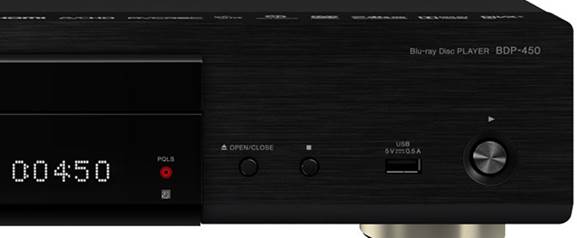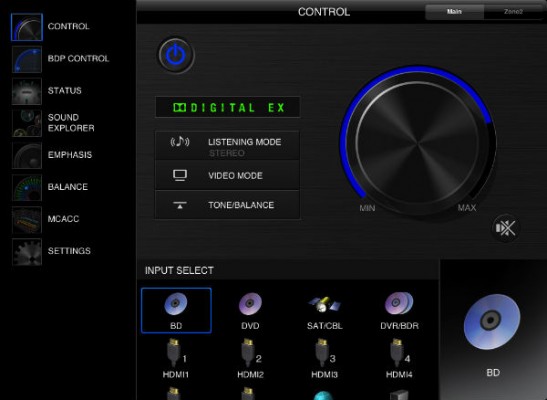Pioneer has thrown the cast among the
universal Blu-ray player pigeons with a multi-talented deck that costs a lowly
$345. We wonder if it’s too good be true
Despite its enticing price tag, Pioneer’s
BDP-450 is aimed squarely at the home cinema enthusiast with audiophile
leanings. Super Audio CD and DVD-Audio might not be exactly I the rudest of
health as far as formats go, but there are plenty of legacy discs out there,
and no shortage of folk who eagerly follow the trickle of SACD titles onto the
market.
I’m certainly a hi-res audio fan, and SACD
playback was one of the reasons bought a Sony BDP-S480 a coupled a years ago.
At that time there was no universal deck reasonably affordable and my DVD-Audio
platters were put in storage. The arrival of the Pioneer BDP-450 changes all
that.

Pioneer
BDP-450 plays every disc format you can throw at it
All of this deck’s connections are digital,
with options to output sound through just coaxial or HDMI. There are two HDMI
outs, which is handy if you want to drive two separate displays or if you
(still) have a legacy AV receiver that won’t play ball with 3D video signals.
Given the deck’s price it’s no surprise that there are no multichannel analogue
outputs, but the absence of a stereo set is a turn up, and those who still like
to listen to CDs via analogue will have to walk away sharpish.
But CD playback is not meant to be the
BDP-450’s strength. It’s a machine designed for film fans and multichannel
music freaks in the digital age. Plus, a single cable hookup certainly makes
things simpler, and I’m happy to let my Onkyo AVR handle the DSD output from
SACD and PCM DVD-Audio signals. The cheapest universal deck with build-in
hi-res decoding and multi-channel outputs, Oppo’s superb BDP-103EU, will set
you back more than twice as much as the BDP-450, plus you’ll need to make sure
you have the necessary Phono cabling.

All
of this deck’s connections are digital, with options to output sound through
just coaxial or HDMI.
Making do with YouTube
Despite Pioneer’s claims to the contrary,
what this deck doesn’t give you is much to get excited about in the way of
Smart TV and streaming online entertainment – all you’re served up is Netflix,
YouTube and Picasa. Although Pioneer’s Smooth Streaming technology is available
to boost the appearance of fine lines and wrinkles when watching
network-delivered content, the paltry selection of online services is almost
not worth its effort. A decent television or PVR will give you much more
meaningful Smart TV services.
Also onboard is Pioneer’s Precision Quartz
Lock System (PQLS), which ensures Jitter-less transmission of two-channel and
multi-channel LPCM audio, but only to a compatible Pioneer AVR.

The
deck also allows you to ‘throw’ YouTube videos from a smart phone or tablet,
which seems superfluous.
The current BD player buzzword, ‘4K up-scaling’
is absent here. Currently, this doesn’t seem like an issue, given the paucity
of UHD hardware and the fact that anyone forking out, say, $24,000 for a
projector won’t be buying a bargain Blu-ray deck.
Although the BDP-450 is DLNA certified
thanks to its Ethernet connection, a separate USBS adapter (the AS-WL300) is
required to go wireless. File compatibility is much greater using a
USB-connected drive than over a network, although contrary to Pioneer’s own
specification (and true to its audiophile leanings) in enjoyed some 24-bit FLAC
playback from a hard drive connected to a Netgear router. No video files
appeared over the network, however, with success only achieved using a USB
drive for playing MKVs, MPEG2 TS rips with 5.1 Dolby Digital audio and DiVX
files. An AVCHD file crashing the deck was annoying but not as concerning as
the loss of the first five second of the picture on all movie file formats.